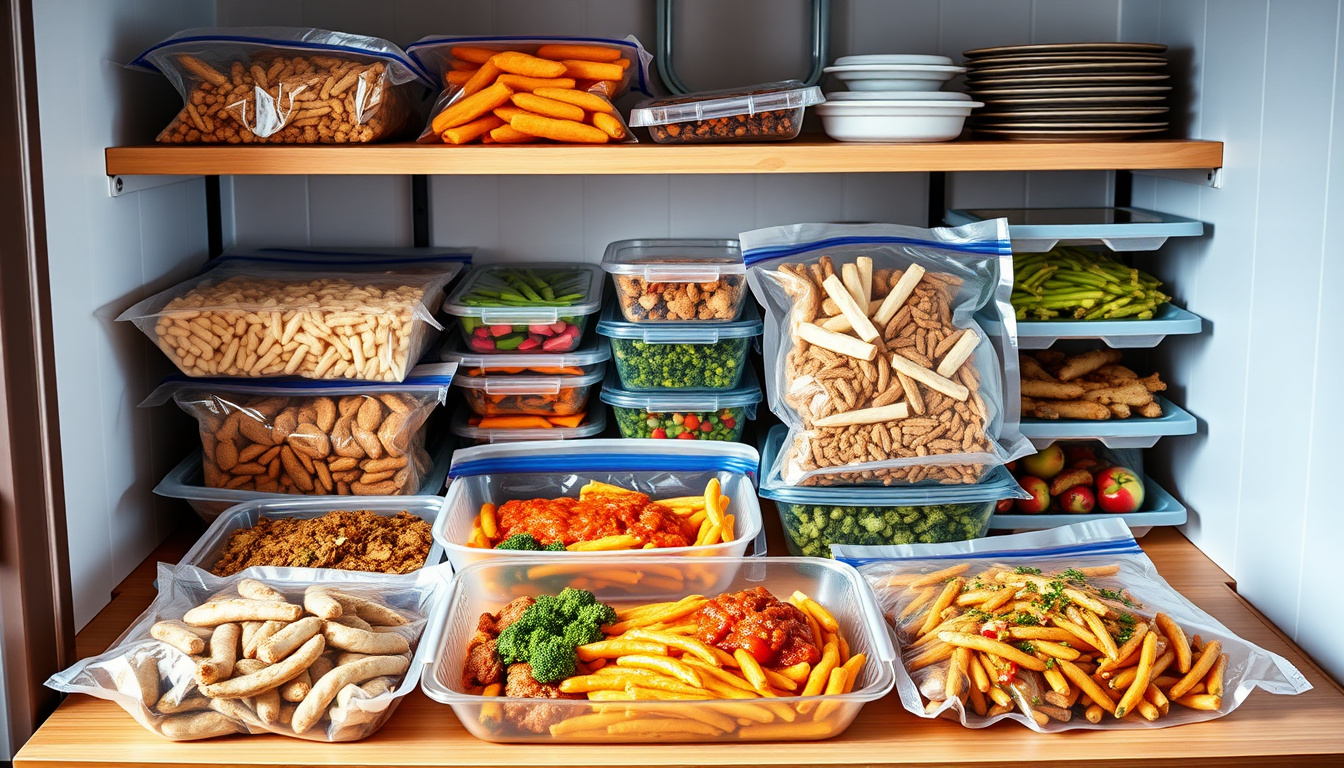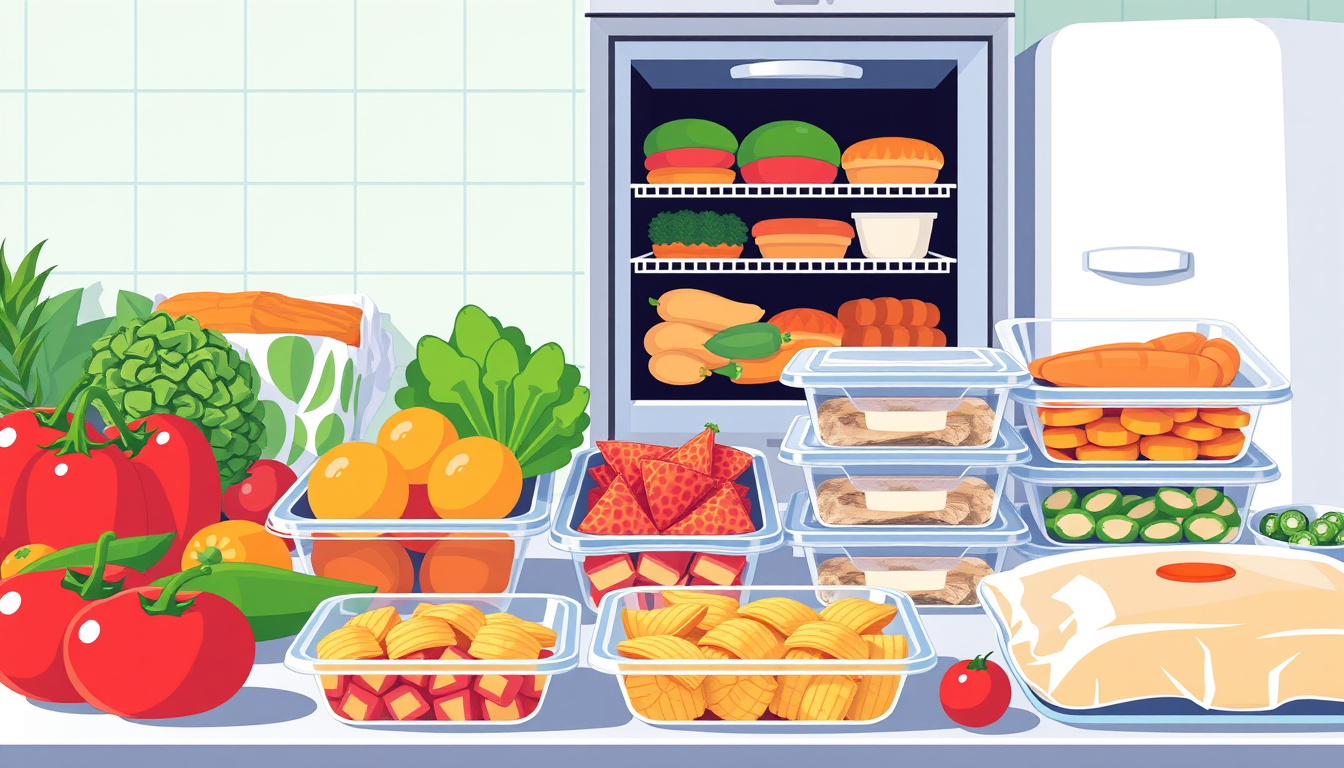Freezing food is an excellent way to extend its shelf life and reduce waste, but it’s essential to prepare it correctly to maintain quality and safety. Here’s your comprehensive guide on how to effectively cool and freeze food for maximum freshness and flavor.
Why You Should Cool Food Before Freezing
One of the most critical steps in freezing food is allowing it to cool down before it hits the freezer. Placing hot or warm food directly into the freezer is a big no-no. Here’s why:
- Safety Concerns: Hot food can raise the temperature inside the freezer, potentially thawing nearby items and creating a breeding ground for bacteria.
- Quality Preservation: Foods that are frozen while still warm can develop ice crystals, which lead to a grainy texture upon thawing. Rapid cooling minimizes this ice formation, helping to preserve the food’s original texture and flavor.
Best Methods for Cooling Food
- Room Temperature Method: For cooked dishes, let them sit at room temperature for about 30 minutes. Monitor closely to avoid leaving food out too long (no more than two hours for safety).
- Ice Bath Method: For liquids, submerging the pot in a bowl or sink filled with ice water can cool the food rapidly. This method is particularly effective for soups or stews.
Proper Freezing Techniques
Now that your food is cool, here’s how to freeze it effectively:

-
Wrap it Well: Use freezer-safe bags or airtight containers. For added protection against freezer burn, wrap food in plastic wrap or foil before placing it in the bags. Remember, removing as much air as possible from the packaging will help maintain food quality.
-
Portioning: Consider freezing in smaller portions. This not only speeds up the freezing process but also allows for easier thawing later on.
-
Labeling: Always label your frozen items with the name and date of freezing. It will help keep your freezer organized and minimizes the chances of food being forgotten or going bad.
-
Freeze Fast: The faster food freezes, the better it will retain its quality. If you can spread it out in a single layer on a baking sheet before transferring it to bags or containers, this rapid cooling will preserve the flavor and texture.
Foods to Avoid Freezing
Not all foods freeze well. Here’s a quick list of items to steer clear of:
- Eggs in Shell: They can expand and crack when frozen.
- Canned Foods: Risk of exploding containers.
- Salads and Fresh Greens: They lose their crunch and texture upon thawing.
- Creamy sauces: Sauces like mayonnaise or hollandaise can separate and become unappetizing once thawed.
Foods that Freeze Well
Conversely, here are some foods that freeze beautifully:
- Cooked Grains: Rice and quinoa can be frozen cooked or uncooked. They maintain quality for about six months when cooked.
- Soups and Stews: These can be frozen in individual portions, making them a convenient meal option later.
- Casseroles: Dishes like lasagna or baked ziti freeze exceptionally well and typically taste even better once thawed.
- Meats: Raw meats freeze well for extended periods, maintaining their quality for up to a year if vacuum-sealed.
Thawing Frozen Food Safely
Once you’ve frozen your meal, you’ll need to thaw it properly. Here are three safe methods recommended by the USDA:
- Refrigerator Thawing: This is the safest method but can take time. Plan ahead if you need to defrost a meal.
- Cold Water Bath: Immerse sealed bags in cold water, changing the water every 30 minutes until thawed.
- Microwave Thawing: If you’re in a hurry, use your microwave’s defrost setting, though be cautious to avoid starting the cooking process inadvertently.
Conclusion
By cooling your food before freezing, maintaining proper packaging techniques, and being mindful of what to freeze, you can preserve the quality and flavor of your meals for future enjoyment. Whether you’re meal prepping or preserving leftovers, following these guidelines ensures that your culinary creations remain delicious, cost-effective, and safe for consumption. Keep your freezer stocked with tasty meals, and enjoy the convenience they provide!
>> Chest Freezer Reviews <<
>> Upright Freezer Reviews <<

